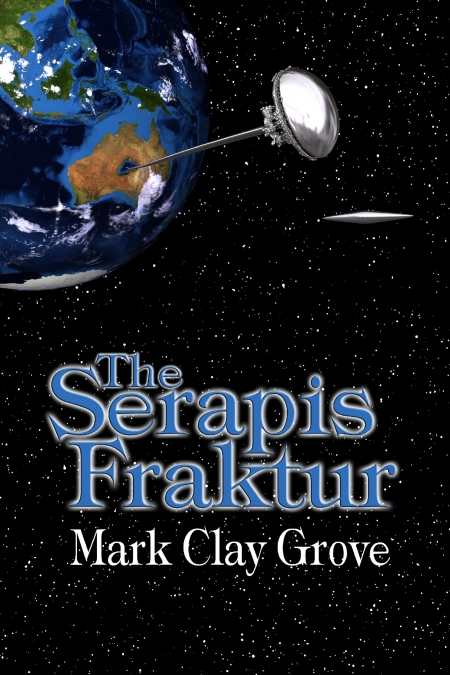The Serapis Fraktur
The Conglomerate Series
For a change, here’s a story of an Earth that is not post-apocalyptic—just a delightful sci-fi romp replete with adventure, aliens, and time travel.
If an author’s sci-fi Rip Van Winkle-type hero is going to wake up from a 450-year nap in the middle of the twenty-fifth century, he might as well arise not only as the “wealthiest person in the universe” but also as “emperor for life.” Such is the good fortune that Charles Dawes awakens to in Mark Clay Grove’s charming and entertaining sci-fi fantasy romp, The Serapis Fraktur.
Grove obviously had fun writing his novel. At a time when so much futuristic science fiction is apocalyptic sturm und drang, it is refreshing to read of a Rodenberryesque future where “disease, hunger, and poverty no longer exist,” the Earth flourishes, and humankind has reached out to colonize the stars. The Serapis Fraktur is as much a pleasant tour of a happy and evolved universe as it is an adventure yarn, one replete with aliens, time travelers, terrorists, robots, and “mostly human” characters, chief among the latter a delightfully erudite butler named (what else?) Jeeves.
While there is no sex, there are pretty women aplenty (some of them human, some of them not), and Grove has inserted some gentle romantic teasing among his characters. Although there is not much action or combat, the cast includes many soldiers and sailors, generals and admirals, and a particularly winsome young officer whose name, Commander Sarah Spitfire, accurately reflects her temperament. These are directed by the hero to frustrate Ettore Majorana, who is both a bad guy and an organization devoted to slipping through time to catch the souls of famous people whom they intend to terrorize, torture, and extort into doing evil.
Among those who help the hero combat evil personified is Kent “Dock” Dundee, or “The Ancient One,” a time-traveling twin of the chief antagonist, and one who during his six thousand years on Earth has taken the shape of just about every famous person from Alexander the Great to Albert Einstein. Of all of his incarnations, says Dundee, “Christ, by far, was the biggest pain [in] the neck celebrity to be.”
Grove’s thirty-two chapters are about evenly divided between pleasant sightseeing tour and adventure story. He has added a glossary to help readers with events, characters, and machines real and imagined that arise in the novel, and in addition to a solid and satisfying epilogue, the author has added a polite and exuberant “Thank you!” (in all caps and bold type) to bring the book to its close.
Grove has big plans for his hero—including a prequel due out by the end of 2013 and a mystery series set in the present day with Charles Dawes as the central character.
One problem is that Dawes is just too omnipotent to be true. Even Superman needs kryptonite, General Zod, or Lex Luthor to bring him down—and the book lacks that tension. A truly threatening villain (or tragic flaw) that could present Dawes with a real challenge is needed.
Still, The Serapis Fraktur is rich in history (it includes a quest to go back in time to save the contents of the lost library of Alexandria and its sister repository of knowledge, the Serapeum), and it drops more famous names than a high-school history textbook. It’s a satisfying “good time” read, which makes for a welcome change in the otherwise too often dark future that so many authors have imagined.
Reviewed by
Mark McLaughlin
Disclosure: This article is not an endorsement, but a review. The publisher of this book provided free copies of the book and paid a small fee to have their book reviewed by a professional reviewer. Foreword Reviews and Clarion Reviews make no guarantee that the publisher will receive a positive review. Foreword Magazine, Inc. is disclosing this in accordance with the Federal Trade Commission’s 16 CFR, Part 255.

